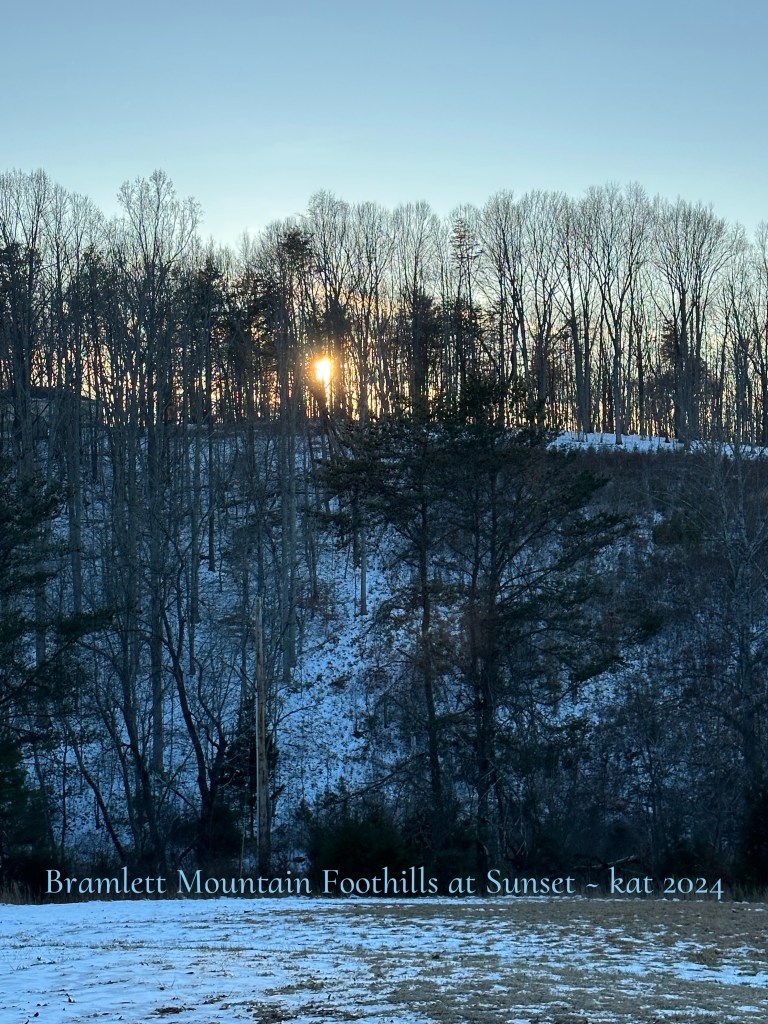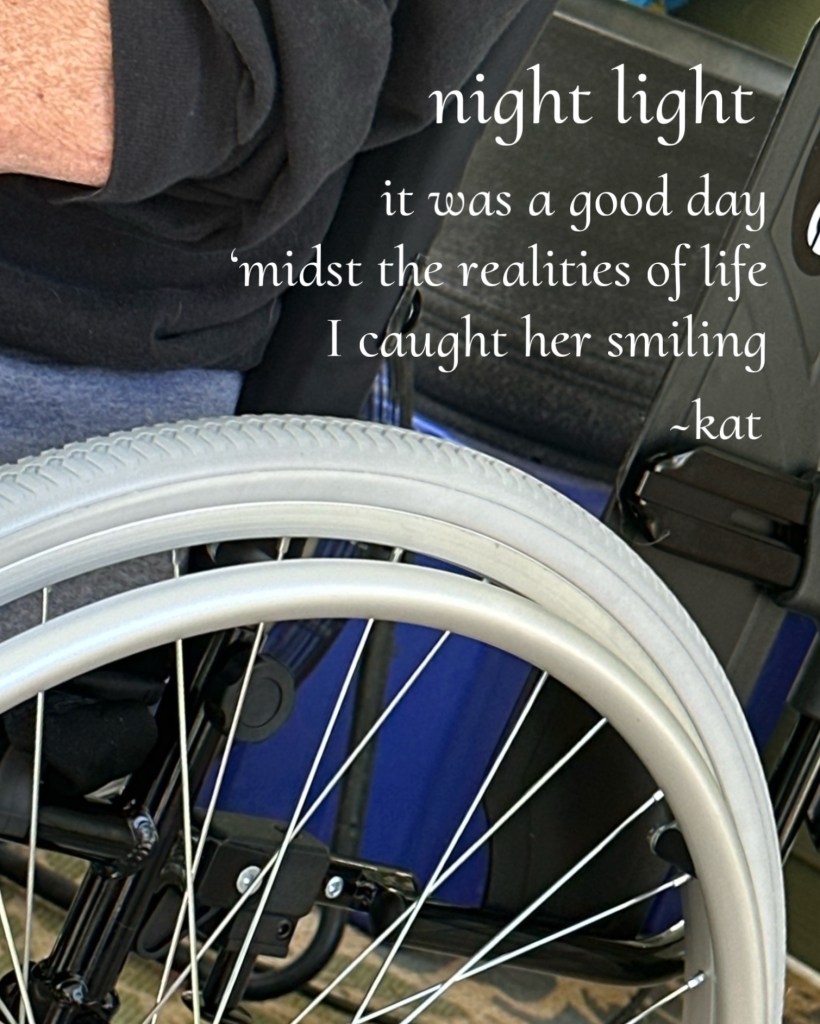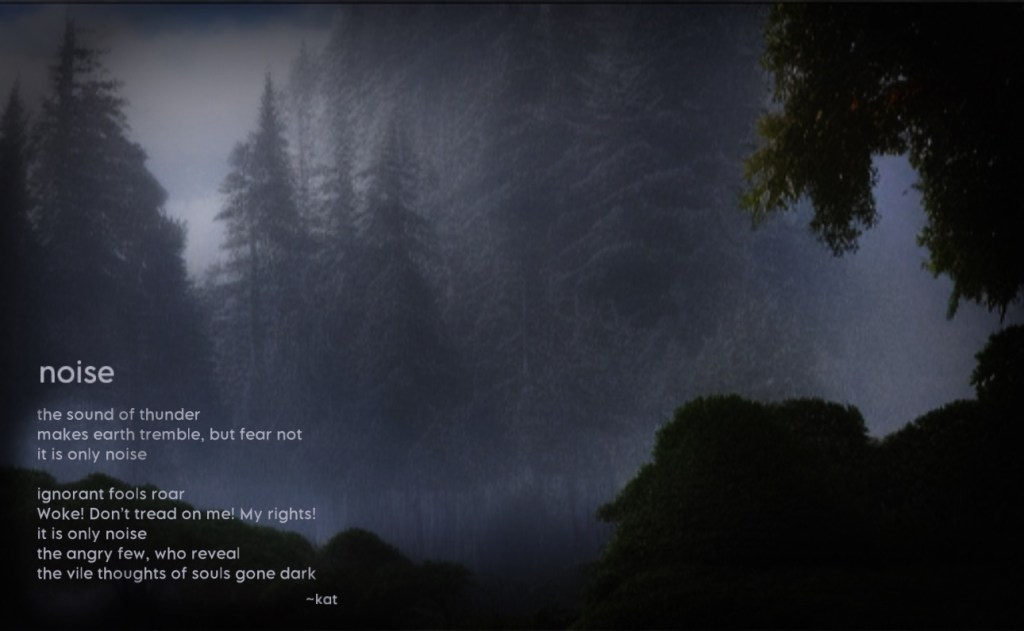
I’m a bit late to the 2024 party. As fate would have it, I was exposed to not just one, but two nasty viruses on Christmas Day at a family gathering. First to darken my door was the flu…a nasty strain this year…and then, just as I was feeling human again a week later, on New years Day, COVID finally got me (a first for me). I suppose I’ve joined the herd. If not for the booster I got last November, the doc said I might not have faired as well as I did. Still it was not how I planned on ringing in the new year! Anyhow…we’ve been snowed in for a bit…things finally melting, and I snapped this view out my front door this evening. It blew me away. I am so grateful for the beauty that surrounds me. For each sunrise and sunset. I hope you and yours are well.
Before I close out this post, I must share another view of the photo above. I applied a mirror filter to it and lo and behold, there she was right there reminding me Gaia, (as I imagine her at this time of year) sleeping amongst the roots, deep underground waiting for spring! What a gift this slight of photo editing produced! Isn’t she amazing!!! If you look at the original, you’ll see her peeking out at you. Sometimes it takes a mirror to see things more clearly.
It’s a reminder to me that it’s okay to rest (I’ve rested a lot this year). A new year need not be tackled all at once. We have 365 (actually 366 days this year) to live the promise of 2024.
I wrote a little haiku too. Of course I did! Peace and much love to you!

gaia suspended
deep beneath the snow
she slumbers, dreaming of spring
winter lingers long
~kat~









